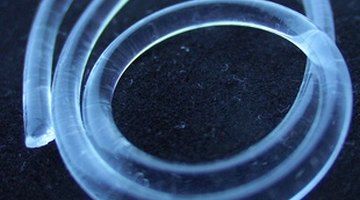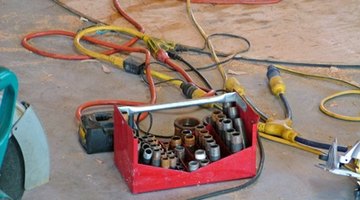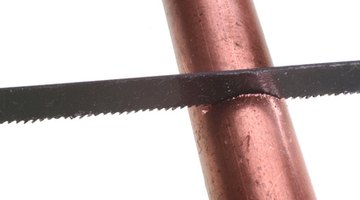How to Install Quest Fittings
Quest fittings are plastic compression fittings that will work on copper, polybutylene, PEX and other plastic tubing. They are sized by the inner diameter of the tubing onto which they will be installed. Quest fittings find their widest use in a trailer's plumbing and climate control devices. Whether you need a fitting for a coded-by-color application or one that has a gauge on one end and a needle valve on the other, Quest can oblige your need. Correctly installing these fittings onto whatever material your tubing or hose is made of is the key to a good, tight connection.

-
Turn off the water to the faucet and fittings you are installing. Use a center punch to make a slight indentation into the line. Drill a pilot hole in the indentation very carefully, using the drill and 1/8-inch bit.
-
Refer to the diagrams that came with the faucet to mount the chassis punch onto the line. Gradually tighten the nut to create the hole. File the edges free of any burrs created by making the hole.
-
Take the hardware off the threaded nipple, leaving the chrome base plates and rubber washers on the assembly. Insert the threaded pipe through the sink mounting hole and set the faucet in its permanent position on the sink. From under the sink, slip the spacer, flat washer and hex nut onto the threaded pipe, in that order. Tighten them by hand for now.
-
Check the permanent positioning of the faucet, and use a wrench to further tighten the assembly you just tightened by hand. You may have to hold the faucet with one hand and tighten with the other when you start to get resistance.
-
Select a convenient, reachable location on the vertical water line to mount the saddle valve. Hold the back plate against the tube. Place the saddle valve against the tubing directly opposite the back plate. Tighten the screw to secure the valve and back plate in place on the tube. Continue to tighten gradually, without collapsing the tube, until the hole is made.
-
Slip the nut and sleeve of the Quest fitting onto the tubing. Push the insert into the tubing. Mount the tubing with its insert and sleeve into the valve body. Screw on the compression nut onto the valve body and tighten securely. Turn the tapping valve handle to the right or clockwise until it is completely seated and the piercing needle is fully extended.



References
Tips
- Follow plumbing standards and codes for installing the faucet assembly and Quest fittings.
Warnings
- To prevent damaging the piercing needle of the saddle valve, do not allow the point to go beyond the rubber gasket.
Writer Bio
Chuck Brown is a freelance writer and former teacher and athletic coach. He has held professional stints as a business owner, personal fitness trainer, curriculum designer, website designer, market trader and real estate investor. Brown holds a bachelor's degree in English and a master's degree in Christian counseling.
Photo Credits
- gel tubing macro image by laurent dambies from Fotolia.com
- plumber, plumbing image by Greg Pickens from Fotolia.com
- old worked off adjustable wrench 4 image by Kostyantyn Ivanyshen from Fotolia.com
- bricolage.. image by Claudio Calcagno from Fotolia.com
More Articles



